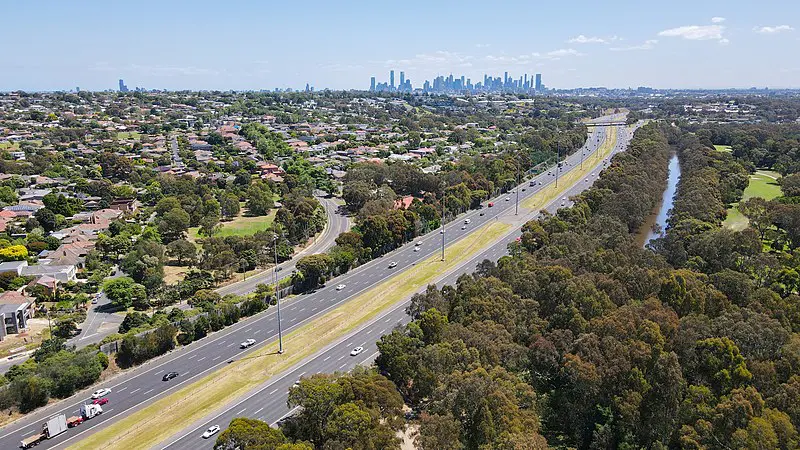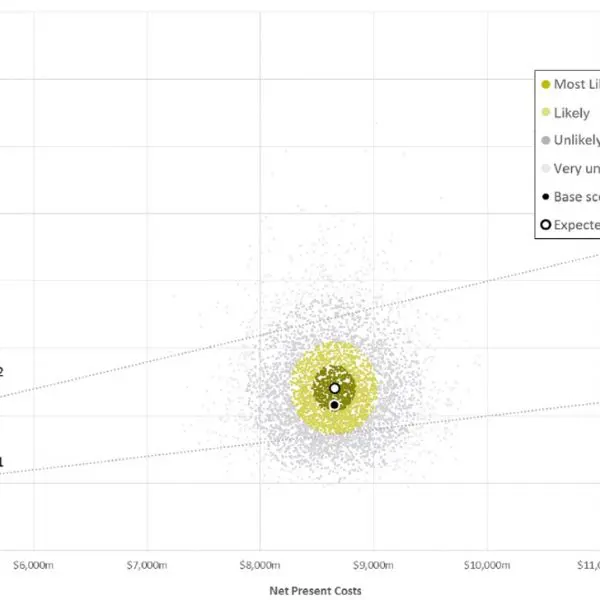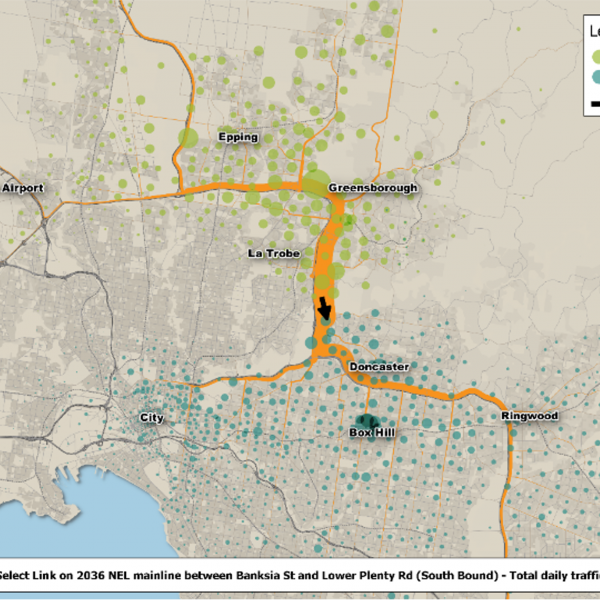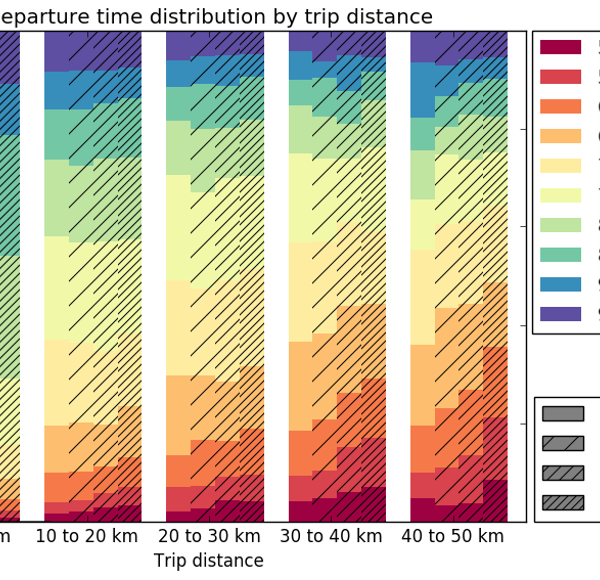
North East Link
End client
North East Link Project
Services
Location
The North-East Link Program (NELP) is Victoria’s largest ever road project that will fix the missing link in Melbourne’s freeway network with twin tunnels from the M80 Ring Road in Greensborough to the Eastern Freeway in Bulleen, includes upgrades to the Eastern Freeway and M80 and a dedicated busway from the Doncaster park and ride to the city. VLC was engaged by the North East Link Program (NELP) to undertake transport modelling for the project and was involved with several innovate solutions including the first use of a probabilistic cost benefit analysis on a major transport project in Australia, the incorporation of a Land Use Interaction (LUTI) framework and the development of a Departure Choice model.
Client requirements
NELP commissioned VLC to provide strategic transport modelling services to assist in the development of a business case for NEL, the subsequent planning approvals process and in the development of the tolling strategy. VLC’s transport advisory services were used to inform:
- Project scope and design
- Business case
- Economic and financial appraisal
- Urban renewal and value capture analysis
- The planning approvals process
- Environmental Effects Statement
- The design process, including data migration with microsimulation models
- Tender evaluation process
- Tolling strategy
In providing this advice, NELP’s key requirement was robust transport demand forecasting.
NELP undertook peer review processes of the strategic transport modelling, the purpose of these reviews was to refine analysis and provide assurance that VLC’s forecasts were robust. The first review by KPMG focused on the modelling underpinning the business case, the second conducted by Dr. Luis (Pilo) Willumsen, on the modelling undertaken as part of the Environmental Effects Statement.
Delivered outcome
In the options assessment, business case development and planning approval phases of North East Link, VLC delivered transport demand forecasts. VLC undertook testing of various design options and tolling regimes for North East Link. Additional sensitivity tests were undertaken to determine the likely impacts of both local (other major transport projects) and global factors (i.e. autonomous vehicles). To assess how the NEL is likely to shape land use in Melbourne, VLC partnered with EY to integrate the strategic transport model with a Land Use Interaction (LUTI) framework. In the economic analysis of the NEL, a probabilistic cost benefit analysis was undertaken by the business case development team. This innovative approach is more realistic, as it better accounts for uncertainty in project costs and benefits. With its key output colloquially known as the ‘fried egg’, this assessment offers decision makers with a nuanced perspective into the likely costs and benefits. The NEL was the first major project in Victoria to apply both a LUTI framework and a probabilistic approach to forecasting project impacts, costs and benefits, this work was nominated for the ‘Innovation Excellence’ category in the ‘Infrastructure Partnerships Australia 2019 National Infrastructure Awards.
VLC also used its model development skills to tailor model outputs and analyses to the needs of the NELP. This agile approach enabled the client to request specialised analysis of metrics such as accessibility and market capture. In doing so VLC delivered NELP with a detailed and holistic understanding of how the North East Link is likely to shape Melbourne.
Where peer reviews were undertaken, VLC was responsive and diligent in assisting the reviewers. Where possible VLC implemented the feedback of the peer reviewers, with the final product being acceptable to both the reviewer and their client.


